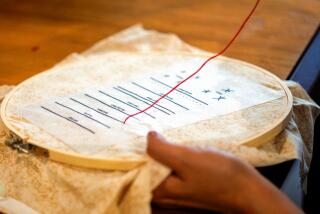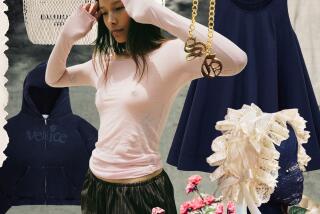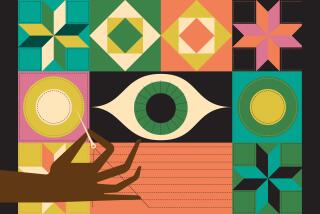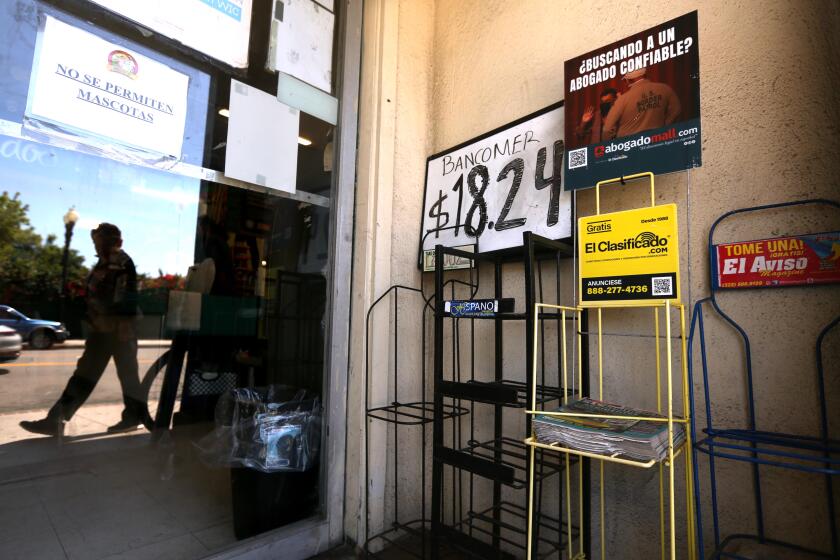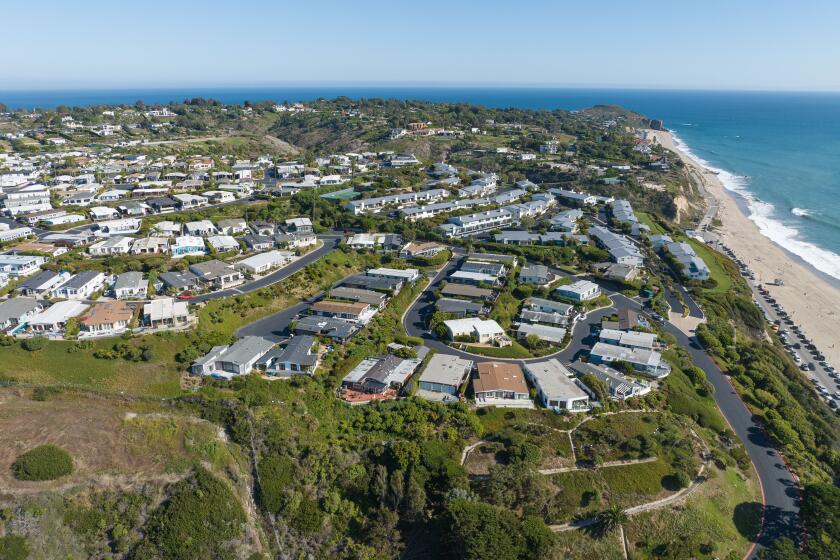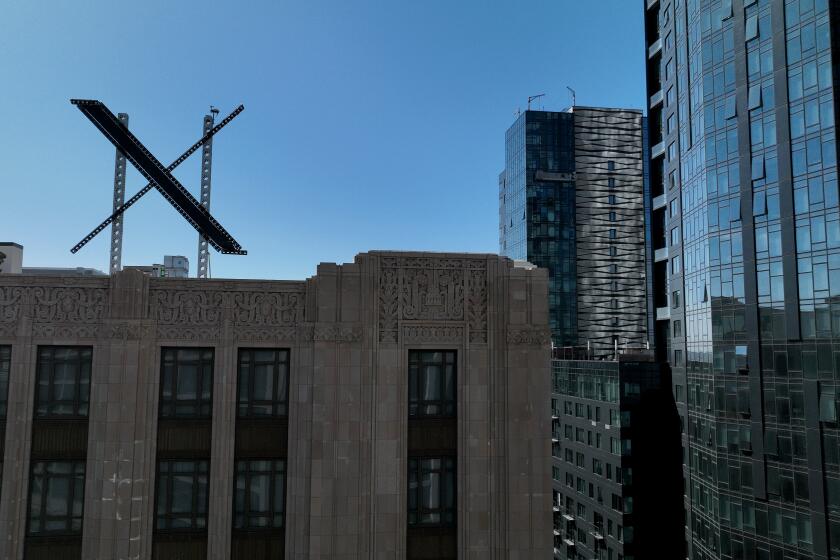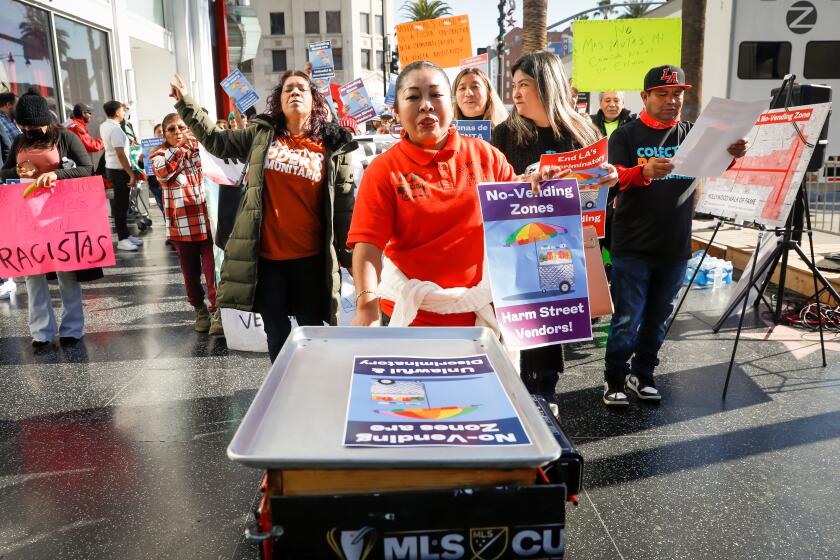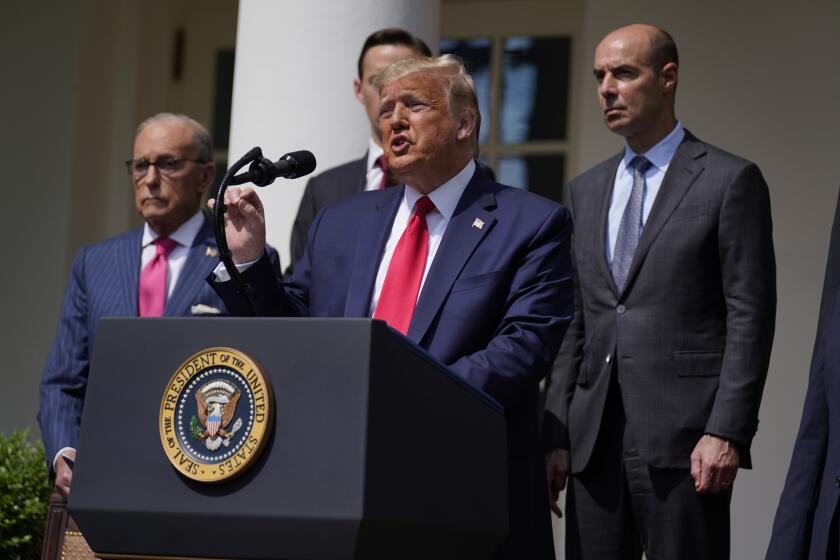Muslim clothing companies flourishing in Southland
Islamic clothing is getting a bit more hip in Southern California.
Home to one of the largest Muslim communities in the nation, the Southland has become fertile ground for a new generation of designers crafting clothes for women who are limited by faith and conviction from flashing too much skin.
Although Muslim women have been dressing fashionably for years, many in the U.S. say they still face tricky challenges when getting dressed — and especially dressed up.
“We are Muslim and we can still express ourselves, be fashionable, as long as we do it in a halal way” or in keeping with Islamic law, said LaTanya Maassarani, 30, a postal carrier from Long Beach. “But unless you have lots of money or lots of time to shop, it’s been hard for years to find clothes in America that aren’t dowdy.”
Filling that void now are designers such as Afra Said-Ahmed and her sister Eiman Ahmed, both Muslims, who launched Irvine clothing company Mohajababes. The name is a mash up of the words “babe” and “Muhajiba,” or one who wears a hijab scarf.
“Trying to conform to Muslim dress codes, you get stuck in a rut of black, black, black all the time,” said Ahmed, 26. “It’s definitely very difficult, especially in the U.S. You want to fit in, but still be appropriately dressed.”
So she and her sister scraped together $2,000 and began selling caftans and rhinestone accessories for head scarves at the end of 2011. The line is modest — caftans sweep the floor and hang loosely on the body. Yet the jewel-colored clothing comes with feminine frills such as silky fabrics and metallic embroidery.
Said-Ahmed said their goal was to dress fashion-conscious shoppers who are faithful to Islamic mandates but want nothing to do with traditional black coverings such as abayas and burkas, which are too hot for the California sun.
“There is a huge market here for Muslims who can’t access clothing like this,” she said. “People were saying, ‘Oh my God, that’s amazing. I have been looking everywhere for this.’”
Local designers in Irvine, Long Beach, San Diego, Newport Beach and Los Angeles are opening stores, showing off wares at conventions and sending models down runways in the Southland.
They’re hoping to make serious money: Southern California has a ready pool of more than half a million Muslims concentrated in areas such as Anaheim, Irvine and West Los Angeles, said Munira Syeda, spokeswoman at the Council of Islamic-American Relations.
Fashion shows such as “Fashion Fighting Famine,” an annual charitable runway event in Irvine, have focused on homegrown Muslim talent in recent years.
Nida Chowdhry, executive director of the runway show, said Muslims in Southern California are ready to spend for fashion.
“Many here are more ahead of the curve in following fashion trends,” she said. “Designers know there’s a local community hungry for different ways to wear what is on trend with a few adjustments.”
Muslim Americans say the new designers make getting dressed in the morning — and avoiding stares from people nervous about anyone who looks remotely Middle Eastern — much easier.
Amira Mertaban, 21, said young Muslim women like herself now have the confidence to remain true to Islam. Even a few years ago, she said, women who didn’t want to look dour resorted to layering miniskirts on top of jeans.
“If a non-Muslim looks at you, it obviously makes them more comfortable if they don’t see the standard black that they see in the news all the time,” the Chino Hills college student said as she proudly showed off her pale pink hijab, striped maxi dress and stylish Marc Jacobs glasses. “Fashion has given Muslims a sense of relief.”
Aside from the challenges of running a small business, designers churning out Muslim clothing must navigate tricky cultural norms and interpretations of Islamic law. Some conservative, older members of Muslim communities — and even younger members — frown upon anything brightly colored or remotely flashy, said Anna Secor, a University of Kentucky professor who has studied Islamic fashions.
Secor said Islamic laws mandating modesty are open for wide interpretation. In Saudi Arabia, most women wear abayas and many also cover their hair with hijabs, she said. In Turkey, on the other hand, some young women dress in skintight bodysuits with strappy sundresses on top.
“What exactly is the boundary of modesty is contested and a lot of people don’t agree,” she said. “This tension of fashion and Islamic modesty is something women deal with every day of their lives.”
Mohajababes carefully tailored the marketing to the audience: Models show very little skin. Its website has links to tutorials on stylish ways to wrap head scarves. And the company’s tag line delivers the message: “We’ve got it covered.”
Even so, Ahmed penned a long blog post on the firm’s site in response to “violent” online diatribes against popular Muslim fashion bloggers and designers. But the company has made some concessions, shelving plans for a shorter, knee-length caftan and embroidered trousers.
“If we sold pants, people would say, ‘These trousers — you can see the legs, that is totally inappropriate,’” she said, adding that their vibrantly colored clothing has already drawn harsh critics. “We have heard people say ‘It’s too bright, the caftans are too pretty, and they attract too much attention.’”
Some local designers are hoping to inch away from controversy by angling for an audience beyond the Muslim community.
In December, sisters Nadia Rayan and Nora Ghaneian launched the evening-wear line Rayan, designed and manufactured in Los Angeles.
Like many Muslim American designers, they first began making clothes for themselves — designing gowns to wear to family weddings — after finding few alternatives at the mall besides flesh-baring dresses or frumpy frocks.
“Pretty much the only options were mother-of-the-bride dresses, or a strapless or one-shoulder gown where you have to wear a long-sleeved bodysuit underneath or a cardigan over,” Ghaneian said.
“For people who are trendy and keep up with fashions, those are not valid options,” she said, “so there is definitely a void in the market.”
The Rayan line includes gowns, priced between $250 and $400, in shades of fuchsia, plum and navy decorated with trendy details such as lace and peplums. The designers have sold about 25 dresses already and hope to eventually expand beyond the Muslim women who are their customer base.
“Our ultimate goal is to sell in a department store like Bloomingdales and Nordstrom,” she said. “Right now we are marketing toward our Muslim community because we know there’s a void, but many women would want a long-sleeved dress every now and then.”
More to Read
Inside the business of entertainment
The Wide Shot brings you news, analysis and insights on everything from streaming wars to production — and what it all means for the future.
You may occasionally receive promotional content from the Los Angeles Times.
